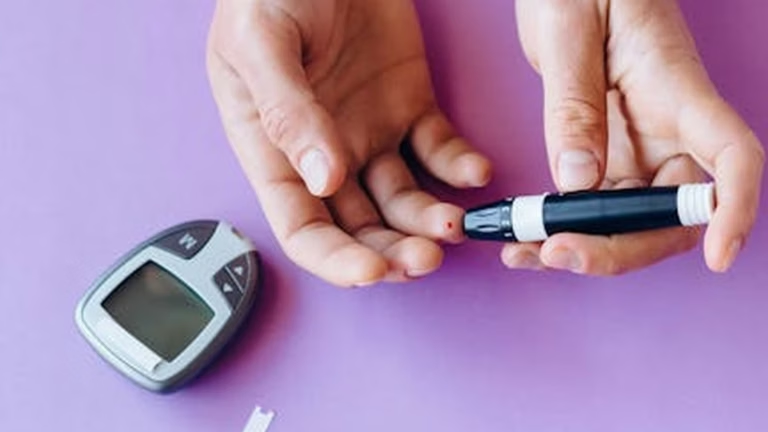The Rise of Biofeedback: Using Technology to Manage Stress and Anxiety
Introduction to Biofeedback
In today’s fast-paced world, stress and anxiety have become increasingly prevalent. Many individuals seek effective and non-invasive methods to manage these conditions. Biofeedback has emerged as a powerful tool in this quest, offering a unique approach to understanding and controlling the body’s physiological responses to stress.
Biofeedback is a technique that empowers you to gain conscious control over bodily functions that are typically considered involuntary, such as heart rate, muscle tension, skin temperature, and brainwave activity. By using electronic monitoring devices, you receive real-time feedback on these physiological processes, allowing you to learn how to consciously influence them and achieve a state of relaxation and calm.
How Biofeedback Works
The process of biofeedback involves several key steps:
- Assessment: Sensors are attached to your body to measure specific physiological signals related to stress, such as heart rate variability, muscle tension (EMG), skin conductance (GSR), or brainwave activity (EEG).
- Feedback: The sensors transmit this information to a monitoring device, which displays it in a user-friendly format, such as a graph, sound, or visual representation. This allows you to become aware of your body’s responses in real-time.
- Training: A trained biofeedback therapist guides you through various relaxation techniques, such as deep breathing exercises, progressive muscle relaxation, or guided imagery. As you practice these techniques, you observe the changes in your physiological signals on the monitor.
- Learning and Control: Through repeated practice and feedback, you learn to identify the thoughts, feelings, and behaviors that trigger stress responses in your body. You then develop the ability to consciously control these responses and achieve a more relaxed state.
Benefits of Biofeedback
Biofeedback offers a wide range of benefits for managing stress, anxiety, and other related conditions:
- Stress Reduction: By learning to control your physiological responses to stress, you can effectively reduce feelings of anxiety, tension, and overwhelm.
- Anxiety Management: Biofeedback can help you manage the physical symptoms of anxiety, such as rapid heart rate, sweating, and muscle tension.
- Pain Management: It can be used to alleviate chronic pain conditions such as headaches, migraines, and fibromyalgia.
- Improved Sleep: Biofeedback can promote relaxation and reduce the mental chatter that often interferes with sleep.
- Enhanced Focus and Concentration: By reducing stress and anxiety, biofeedback can improve your ability to focus and concentrate.
- Increased Self-Awareness: Biofeedback provides valuable insights into your body’s responses to stress, fostering greater self-awareness and emotional regulation.
Types of Biofeedback
Several types of biofeedback are available, each focusing on different physiological parameters:
Electromyography (EMG)
EMG measures muscle tension. It’s often used to treat tension headaches, TMJ disorders, and other conditions related to muscle spasms.
Electroencephalography (EEG)
EEG, or neurofeedback, monitors brainwave activity. It’s used to treat ADHD, anxiety, and epilepsy.
Heart Rate Variability (HRV) Biofeedback
HRV biofeedback measures the variation in time between heartbeats. It’s effective for managing stress, anxiety, and improving cardiovascular health.
Skin Conductance (GSR) Biofeedback
GSR, also known as electrodermal activity (EDA) biofeedback, measures sweat gland activity, which is linked to emotional arousal. It’s often used in anxiety management.
Temperature Biofeedback
This measures skin temperature, often in the hands and feet. It can be helpful for conditions like Raynaud’s disease and migraine headaches.
Getting Started with Biofeedback
If you’re interested in exploring biofeedback, here are some steps to get started:
- Find a Qualified Therapist: Seek out a licensed healthcare professional with specialized training in biofeedback. Organizations like the Biofeedback Certification International Alliance (BCIA) offer certification programs.
- Initial Consultation: Discuss your goals and concerns with the therapist to determine if biofeedback is right for you.
- Personalized Treatment Plan: The therapist will develop a customized treatment plan based on your individual needs and goals.
- Regular Sessions: Attend regular biofeedback sessions and practice the techniques you learn at home.
- Track Your Progress: Monitor your progress and work with your therapist to adjust your treatment plan as needed.
Practical Tips for Incorporating Biofeedback Principles into Daily Life
- Practice Deep Breathing: Regularly practice deep, diaphragmatic breathing to calm your nervous system.
- Mindful Meditation: Engage in mindful meditation to increase your awareness of your thoughts and feelings without judgment.
- Progressive Muscle Relaxation: Practice progressive muscle relaxation to release tension in your body.
- Regular Exercise: Engage in regular physical activity to reduce stress and improve your overall well-being.
- Healthy Diet: Maintain a healthy diet to nourish your body and support optimal brain function.
Conclusion
Biofeedback offers a promising avenue for managing stress and anxiety by empowering individuals to take control of their physiological responses. By learning to consciously influence bodily functions, you can achieve a state of relaxation, improve your overall well-being, and enhance your quality of life. If you’re seeking a non-invasive and effective approach to stress management, biofeedback may be a valuable tool to explore.






